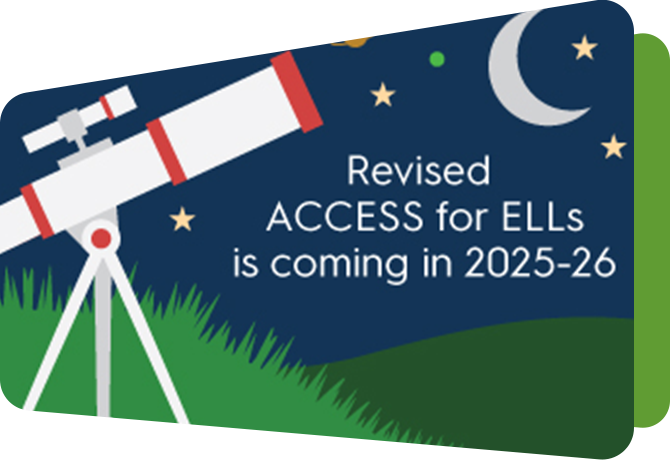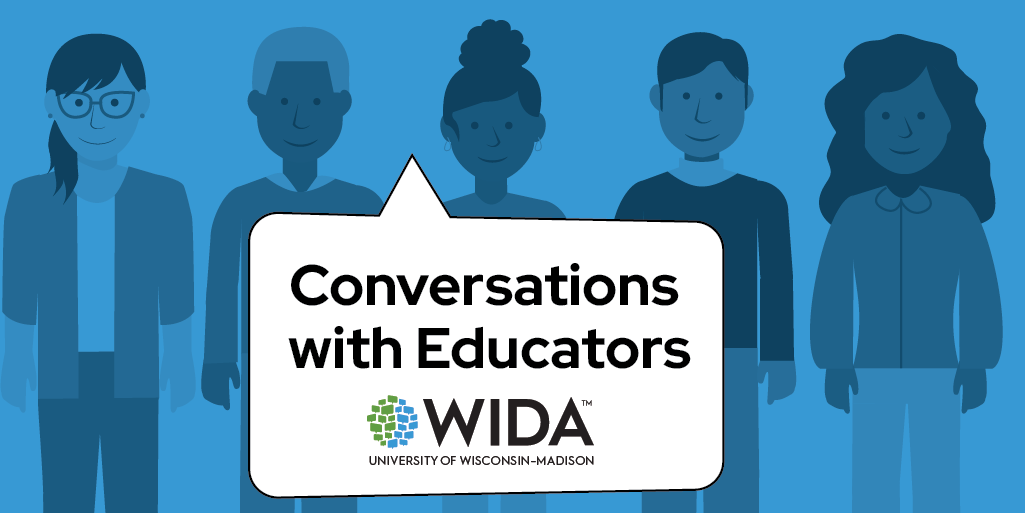News
All News
Four Tips for Teaching Reading in Content Areas
This article offers four strategies to help multilingual learners build reading comprehension across content areas: explore text purpose and structure, connect to students’ home literacy experiences, engage in text-based discussions and teach strategic reading practices through modeling and reflection.
Everything You’ve Ever Wanted to Know: WIDA ACCESS 2025-2026
Are you new to WIDA ACCESS? Have you administered an ACCESS test before but can’t remember where to find things like training, test prep and test materials? Look no further than this brief reference to all things ACCESS!
Understanding WIDA ACCESS Braille and the New Speaking Domain
At WIDA, we consistently strive to make our products and services more accessible. It’s important to ensure all multilingual learners have the opportunity to fully demonstrate their skills. For multilingual learners who are blind or have low vision, this means providing assessments that are not only accessible but also equitable and valid. That’s where WIDA ACCESS Braille comes in.
Educators Learn, Lead and Innovate at WIDA Annual Conference
The 2025 WIDA Annual Conference was a celebration of innovation, learning and connection among educators dedicated to multilingual learners. This year’s theme, “Igniting Innovation for Multilingual Learners,” and WIDA’s bright future within the University of Wisconsin–Madison School of Education came to life across keynotes, sessions and conversations.
New York Joins WIDA Consortium, Strengthening Support for Multilingual Learners
WIDA is proud to welcome the state of New York to the WIDA Consortium. This major milestone marks an exciting step forward for multilingual learners, educators and families across the state and across the country.
Featured Student: Sherling Garcia Vargas
WIDA has partnered again with Centro Hispano of Dane County for their Escalera summer internship program. Centro Hispano is a nonprofit in Madison, WI that supports Latinx communities in Madison and surrounding areas. WIDA was lucky to have Sherling Garcia Vargas as the 2025 summer intern.
It’s almost time for #WIDA2025
We’re mere weeks away from the 2025 WIDA Annual Conference! This year’s gathering of passionate educators, leaders and innovators will be in-person in Seattle, Washington, from October 28-30, 2025, with an exciting virtual day on October 27, 2025.
How to use WIDA MODEL and the concordance table for instructional planning
WIDA’s suite of assessments includes WIDA MODEL, a flexible interim assessment that gives educators like you valuable insights between annual summative testing. It can be used up to twice per year. You can also use MODEL scores to inform instruction and help you plan.
Best practices for determining accommodations for students
For educators working with multilingual learners with disabilities, choosing the right accommodations on WIDA assessments can feel complicated. New research sheds light on how educators make these decisions, challenges they face and how best practices can support students in showing what they know and can do.
WIDA announces 2025–2026 WIDA Fellows cohort
WIDA is excited to welcome new and returning WIDA Fellows for 2025–2026. The program, launched in 2019, brings expert educators and WIDA staff together in a collaborative effort to enhance the development of WIDA products and services.




